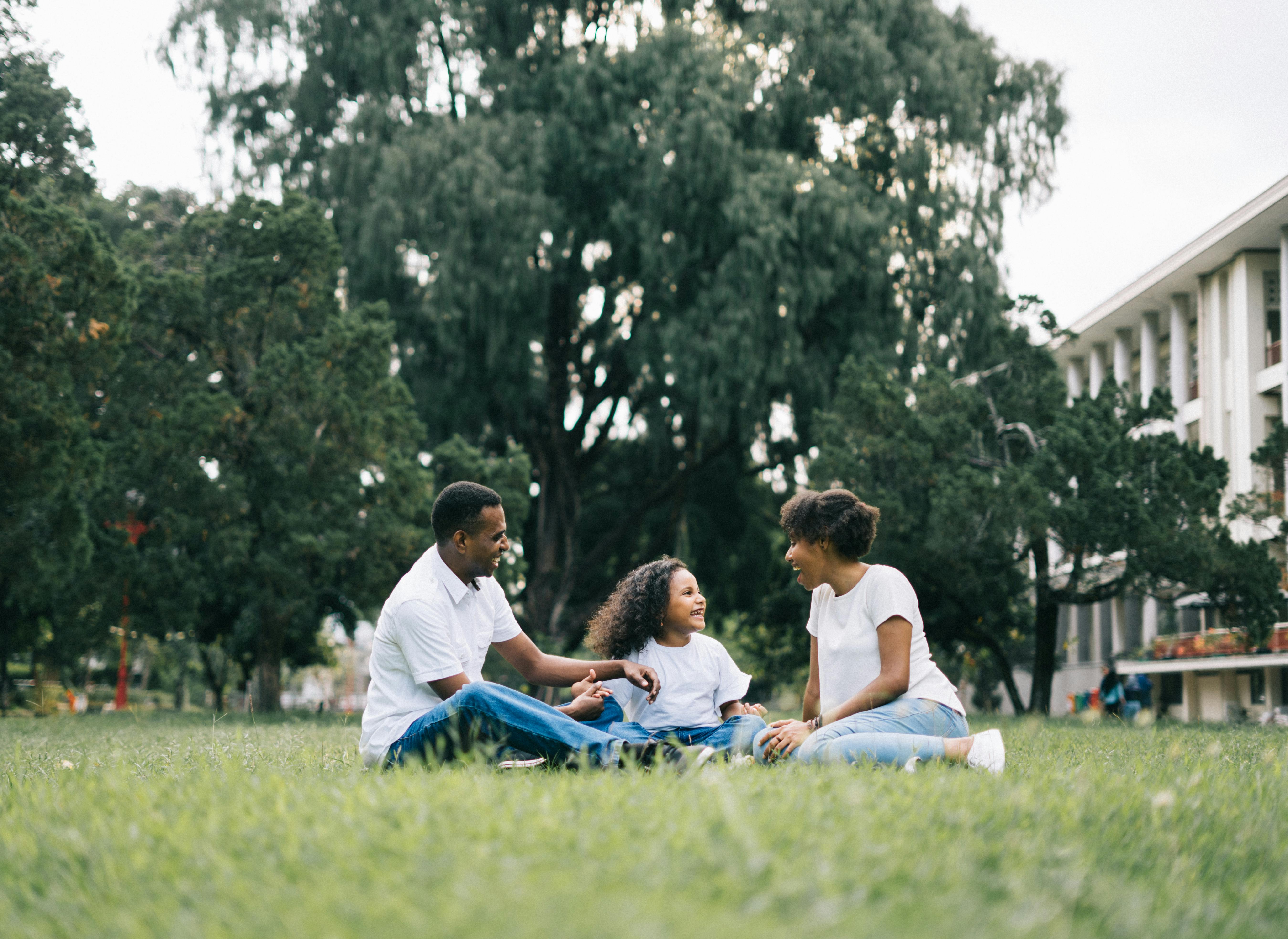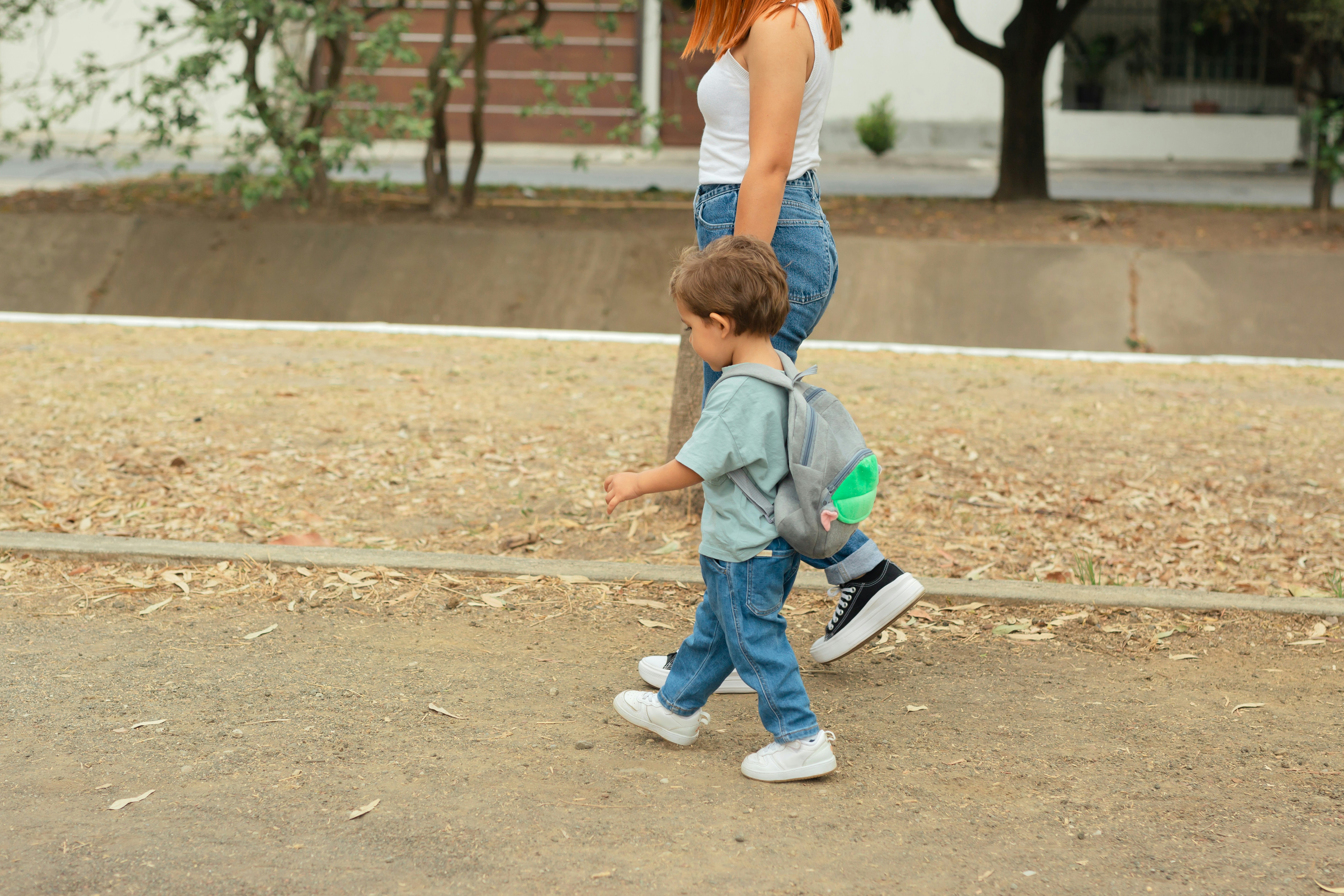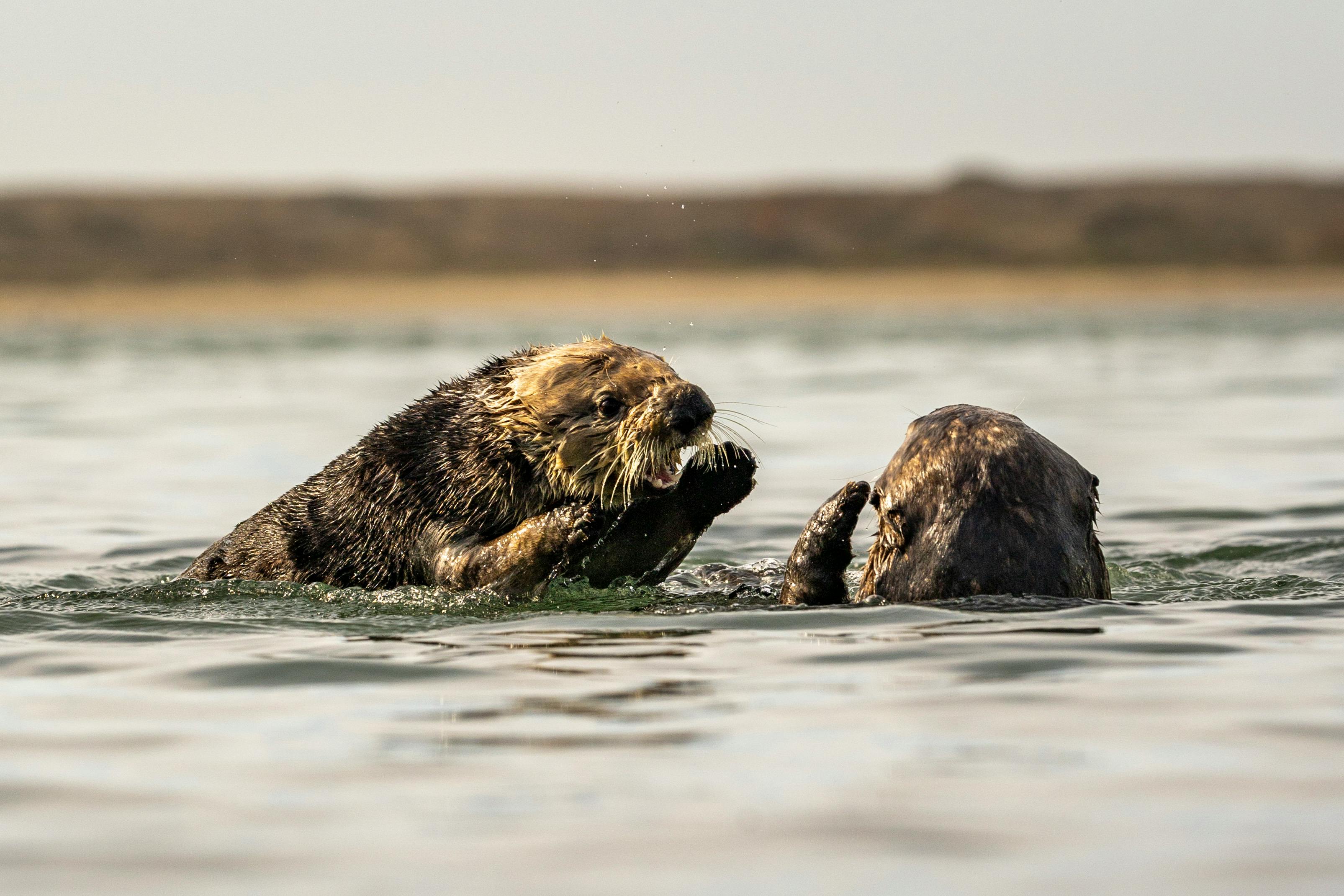As caregivers, it’s completely normal to feel uncertain or even alarmed when young children start showing sexual behaviors. As a child therapist with training in treating Problematic Sexual Behavior, I’m often asked, “Aren’t they too young for this?!”
The reality is that sexual development and sexual behaviors begin much earlier than most parents and caregivers realize. One study found that sexual behaviors occur in 73% of children by the time they reach 13 years old. While it might feel confusing, these early behaviors aren’t necessarily about sexual pleasure, they’re driven by curiosity and the comfort of soothing sensations.
No matter your child’s age, navigating these moments can bring up a lot of discomfort. Talking about sex is already tough for many parents, and when sexual behaviors arise, it can feel impossible to navigate. My hope with this guide is to help you feel more grounded, offering clarity on what’s typical at each stage of development and when certain behaviors may need more attention or support.
Typical Sexual Behavior in Kids
There are two types of sexual behavior in children: developmentally appropriate sexual behavior and problematic sexual behavior. Developmentally appropriate sexual behavior is the clinical way of saying typical sexual behavior for your child's specific age and developmental stage.
Early Childhood, Ages 0–5
From the very beginning, children begin to explore and learn about their bodies. This isn't about sexuality in the same way that it might be for adults or post-puberty teens. For little ones, it’s about discovering what’s comforting and interesting to them, in the same way that having your back rubbed feels comforting and soothing.
What’s Typical
- Touching or rubbing their genitals (in public or private)
- Looking at or touching a peer or sibling’s genitals
- Talking about body parts or bathroom functions (think: poop jokes)
- Trying to peek at others when changing or using the bathroom
- Engaging in play activities, like playing house or doctor
These behaviors are often fueled by curiosity and soothing sensations, not sexual pleasure. Babies, toddlers, and preschoolers haven’t yet developed a sense of modesty, and their interest in bodies is a normal part of growing up.
School-Age, Ages 6–12
As kids get older, they begin to seek more privacy, and their understanding of how bodies work becomes more sophisticated, especially as puberty begins.
What’s Typical
- Asking questions about sex, pregnancy, or relationships
- Wanting privacy during baths or when changing
- Continuing to touch their own genitals in private
- Engaging in sex-related talk with peers (sometimes based on misinformation)
Modesty increases during this stage, but interest doesn’t go away. In fact, this is often a great time to continue having honest, age-appropriate conversations about bodies, boundaries, and relationships. By beginning these conversations now, caregivers are laying the foundation for continued open and honest conversations as their children get older.
Tweens and Teens, Ages 13+
Adolescence is a time of enormous growth: physically, emotionally, and socially. With puberty comes an emerging sex drive, romantic feelings, and more complex questions about identity and relationships.
What’s Typical
- Continuing to touch their own genitals in private
- Wanting privacy around their bodies
- Exploring identity, orientation, and attraction
- Interest in, and often engagement in, dating or sexual relationships
- Engaging in digital sexual behaviors (like sexting, sending nudes, watching porn, or online flirting)
In fact, nearly 9 out of 10 high schoolers report participating in some form of digital sexual behavior like sexting, watching porn, or starting an online relationship. While this can be part of typical development, it also highlights the importance of having open conversations about consent, safety, and respect.
Download our Sexual Behavior in Kids handout as a quick reference sheet about what’s typical and what’s considered concerning.
!CTA-4
What’s Considered Problematic Sexual Behavior
It’s important to know that sexual behaviors occur on a spectrum: typical, concerning or risky, and problematic.
Problematic sexual behavior encompasses a range of sexual behaviors that are considered developmentally inappropriate, harmful, and/or socially unacceptable. It can involve behaviors that cause distress to the individual or others, or behaviors that are considered illegal or coercive. It includes:
- Planned or repeated sexual acts that are aggressive or coercive
- Sexual behavior between two people with a significant age difference
Why Does it Happen?
Problematic sexual behavior is often a symptom of underlying emotional, environmental, or behavioral challenges.
- Difficulty with impulse control or emotional regulation
- Exposure to adult sexual content, even accidentally (movies, tv shows, pornography)
- Experiences of abuse, neglect, or household violence
- Struggles in understanding social or physical boundaries
Is Problematic Sexual Behavior a Result of Sexual Abuse?
Problematic sexual behavior can occur without a history of abuse. While these behaviors can be distressing to witness, they don’t necessarily indicate a history of abuse or an intent to harm others.
If you are concerned that a child is a victim of sexual abuse, reach out to the Childhelp National Child Abuse Hotline.
While there’s no formal diagnosis called “Problematic Sexual Behavior,” it’s often a symptom of other mental health struggles. Some kids with problematic sexual behaviors have other underlying conditions like attention-deficit/hyperactivity disorder (ADHD), oppositional defiant disorder (ODD), post-traumatic stress disorder, depression, or anxiety, but many don’t.
How to Address Problematic Sexual Behavior
If your child is showing signs of problematic sexual behavior, it’s important to respond with structure, calm, and care. Here are key steps you can take as a family to create a safe and supportive environment:
- Set sleeping boundaries. Children showing problematic sexual behavior should not share a bed with siblings or other children.
- Create privacy rules. Create household rules around privacy, like knocking before entering bedrooms or bathrooms, and consistently enforce them.
- Communicate expectations clearly. Talk openly with all family members about what behaviors are appropriate and inappropriate, using clear, age-appropriate language.
- Encourage private self-care. Teach and reinforce that personal hygiene and self-touch should happen in private spaces like the bathroom or bedroom.
- Keep adult supervision consistent. An adult should always be present and in charge when children are playing, especially during unstructured time.
- Model modesty in a way that aligns with your family’s values. Every family has different levels of comfort around nudity and privacy. What’s most important is modeling respectful boundaries, this might look like wearing clothing that feels appropriate in your home, maintaining personal privacy, and being thoughtful about how you talk about bodies.
- Seek support from a therapist. Problematic sexual behavior is often a sign that a child and family need additional support. A licensed therapist trained in trauma, child development, and/or sexual behavior concerns, can help your child learn healthier ways to cope, connect, and grow.
!CTA-6
FAQs About Sexual Behavior in Kids with Hilary Leja, LCSW
Is sexual behavior in kids really that normal?
It’s sometimes shocking to parents but yes, sexual behavior in kids of all ages is completely normal! One study found that sexual behaviors occur in 73% of children by the time they reach 13 years old.
When should I start talking to my child about their body?
While it may feel early, the best time to begin these conversations is during early childhood, starting around age 3. At this stage, kids are naturally curious, making it the perfect window to introduce age-appropriate education focused on body autonomy, consent, safety, and privacy.
To learn more about age-appropriate conversations, check out this article How to Talk to Your Child About Sex, Bodies, and Consent, Without the Shame.
What should I do if my child touches themselves in public?
Because young children haven't yet developed modesty yet, young children may engage in these behaviors in public. Like other non-desirable behavior like nose picking, if you notice your kiddo touching their private parts in a public setting, redirect their behavior to something else. This can include giving them a choice of a new activity, using distractions, or physically redirecting them. Later, you can also remind them that they’re only able to touch their own private parts when they are in private, such as in the bathroom or their bedroom.
How do I explain privacy, boundaries, and consent to young kids?
This actually happens naturally with most little kids in everyday situations. For example, let’s say your child is playing with a friend, and their friend wants a hug. You can say, “Looks like your friend wants a hug! Would you like to give them a hug?” If your child says no, you can offer alternate options, such as giving a high five, a fist bump, or a wave. This helps your child learn that it’s okay to say no, and that their body and space belong to them.
Practicing consent and boundaries doesn’t have to be about big topics, it starts with teaching kids to notice and honor their own comfort and others’, too. The following are some of my favorite resources for little ones around privacy, boundaries, and consent:
It's Not the Stork!: A Book About Girls, Boys, Babies, Bodies, Families and Friends helps answer these endless and perfectly normal questions that preschool, kindergarten, and early elementary school children ask about how they began.
My Body! What I Say Goes! is a children's picture book used to empower and teach children about personal body safety, feelings, safe and unsafe touch, private parts, secrets and surprises, consent and respect.
Consent For Kids is a smart, playful video explanation to consent and bodily autonomy.
How should I respond if my child talks about sex or asks questions I wasn’t prepared for?
I have so many caregivers that deal with this and my guidance is always that instead of aiming for perfection, aim for connection with your child and embrace the fact that yes, this is awkward and uncomfortable and it’s part of all caregivers’ experiences.
If you’re not sure how to answer, or you don’t know the answer, take a moment and say, “That’s a great question! Let’s look into that together because I’m not sure!” That gives you the opportunity to go look up the information and decide how you want to communicate it. Still overwhelmed? Read my article on A Therapist’s Guide to Healthy Conversations About Bodies and Sex.
Resources for Sexual Behavior in Kids
Interested in learning more about sexual behaviors in kids? Check out the resources below.
National Center on the Sexual Behavior of Youth (NCSBY)
The mission of the National Center on the Sexual Behavior of Youth is to promote better lives, through better choices by youth, caregivers, and professionals for healthier responses to and prevention of problematic sexual behavior of youth. NCSBY provides national training and technical assistance to improve the accuracy, accessibility, and strategic use of accurate information about the nature, incidence, prevalence, prevention, treatment, and management of youth with problematic sexual behavior.
Providing medically accurate and age appropriate Sex Ed for all adolescents as determined by Parents, Teachers and Medical Professionals. Amaze, Jr.
Provides conversation starters and discussion guides to help caregivers talk with their children about online safety and the risks involved when sexual exploration and technology mix.
Resources for Sexual Abuse
Concerned about sexual abuse in a child? Check out the resources below. If you are concerned that your child is a victim of sexual abuse, seek professional consultation immediately.
A restorative justice program offering support circles for adult survivors of child sexual abuse (green), non-offending parents (orange), and other non-offending loved ones (blue).
Childhelp National Child Abuse Hotline
A free, 24/7 confidential hotline offering crisis support and resources for anyone concerned about child abuse. Call or text 800-422-4453.
A global advocacy movement led by survivors, pushing for systemic change to end childhood sexual violence.
A nonprofit organization focused on empowering adults to prevent, recognize, and respond to child sexual abuse through education and training.
!CTA-1
in this article
.png)
.jpg)

.jpg)

%20Large.jpeg)







.svg)

